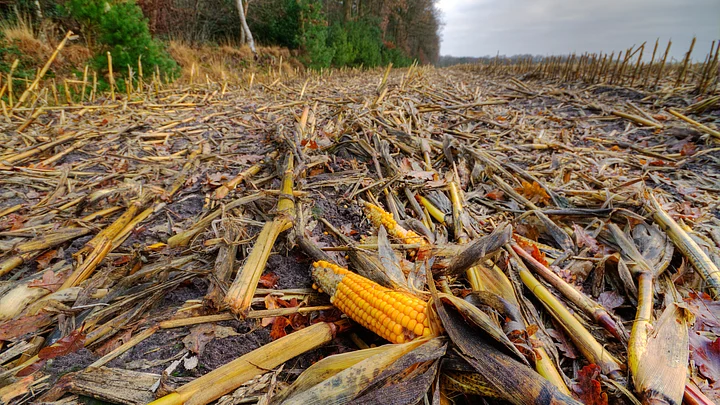[Editor's note: This article has been written for World Environment Day 2024, held annually on 5 June.]
Agriculture is undoubtedly the backbone of our global food system. However, the sector generates an enormous amount of waste in the form of crop residues and byproducts, often left to decompose or burn. Here lies an opportunity for the industry to manage waste responsibly and sidestep environmental hazards.
Sustainable solutions can transform agricultural waste into valuable resources through innovative solutions. One promising approach is the conversion of sugarcane residue, also known as bagasse, into compostable products. Fortunately, this solution has immense potential for land regeneration and soil rejuvenation.
The Process: From Sugarcane Residue to Compostable Alternatives
Sugarcane cultivation is a big industry in many parts of the world. It is an important cash crop in India, and in 2021-22, the country produced more than 5000 Lakh Metric Tons (LMT) of sugarcane. This huge sugarcane cultivation leads to residues after extracting the juice, frequently used as fuel.
This fibrous material, popularly known as bagasse, can be repurposed into compostable products, including packaging material, tableware, compostable flexible packaging etc., through an eco-friendly manufacturing process. Manufacturers can create compostable choices that offer sustainable alternatives by breaking down sugarcane residue and combining it with natural binders.
One of the key advantages of using sugarcane residue is its abundance and renewable nature. Sugarcane is a rapidly renewing crop, making bagasse a readily available raw material. Additionally, products made from bagasse are compostable and can break down naturally without leaving harmful environmental residues.
According to a report, around 1.2 billion tons of sugarcane is produced annually, of which 100 million tons of bagasse is generated yearly. The remaining sugarcane residue is often used for biofuel production and animal feed or simply left to decompose in fields or landfills, representing a missed opportunity for sustainable practices.
Land Regeneration and Soil Health
Healthy soil is the foundation of healthy agricultural land and a balanced ecosystem. Compostable products made from bagasse can play a crucial role in soil enrichment and land restoration. Bagasse can biodegrade in about 90 days, and in commercial composting facilities, post-consumer sugarcane products can break down even faster in just 60 days. After being composted, bagasse becomes a nutrient-rich nitrogen, potassium, phosphorus, and calcium fertiliser.
The use of bagasse to produce compostable paper and various other products offers a remarkable solution that contributes to soil health and reduces environmental impact. Unlike traditional materials that can take years to degrade or leave behind harmful residues, compostable alternatives and other products made from bagasse decompose swiftly, aligning with the natural cycle of organic matter in the environment. This rapid composting adds essential nutrients to the soil and minimises waste accumulation in landfills.
Practical Applications and Case Studies
The potential of using bagasse-based products for land regeneration is being explored and implemented in various parts of India, where sugarcane cultivation is a significant agricultural activity. Several initiatives have been undertaken to promote the use of sugarcane bagasse-based compostable paper in sustainable farming practices.
For example, the Sustainable Sugarcane Initiative (SSI) was implemented by the sugar cooperatives of Maharashtra and NABARD to promote sustainable and intelligent agronomic practices. This initiative integrates twin drip irrigation systems in sugarcane cultivation. It helps small and marginal farmers by offering them financial help, subsidised seedlings, exposure visits and organic manure. SSI cultivation increased crop yield by 20-30 percent and decreased the cost of farming by up to 25 percent by reducing product usage.
Environmental Impact and Sustainability
The use of compostable alternatives made from bagasse aligns seamlessly with the principles of sustainability and circular economy. By repurposing what was once considered an agricultural waste byproduct, this practice reduces the burden on landfills and minimises the environmental impact of agricultural activities. Moreover, it contributes significantly to mitigating climate change by reducing the reliance on chemical fertilisers and promoting healthy soil conditions.
According to a report, twenty million trees are cut down yearly solely to manufacture paper cups. Most of these cups are coated with polyethene, a derivative of fossil fuels, further exacerbating the environmental impact. Even more concerning, a single paper cup takes longer than 20 years to break down in a landfill, contributing to the mounting waste crisis.
The overuse of wood for commercial and industrial applications, including paper production, is a significant contributor to biodiversity loss, deforestation, water pollution, and greenhouse gas emissions. Approximately 40 percent of the wood harvested globally is used for such purposes, placing immense strain on our natural resources and ecosystems.
One of the major challenges in decomposing bagasse is the absence of dedicated composting facilities and infrastructure to process bagasse into compostable alternatives on a large scale. Setting up composting facilities and transitioning to compostable products can be capital-intensive. These challenges can be addressed by ensuring proper composting conditions and educating farmers on the correct application techniques.
Future Prospects
As the world becomes increasingly aware of the importance of sustainable practices and environmental conservation, the potential for compostable alternatives made from bagasse like food packaging solutions, flexible packaging, and tableware is immense.
With collaborative efforts between industries, researchers, and governments, this innovative solution can be scaled up and adopted across diverse agricultural regions. The transformation of sugarcane residue into compostable alternatives presents a remarkable opportunity to turn agricultural waste into a valuable resource for land regeneration and soil health restoration.
(Jagdeep Hira is the India Business Head at Pakka.)
(At The Quint, we question everything. Play an active role in shaping our journalism by becoming a member today.)
